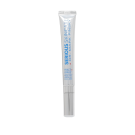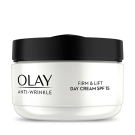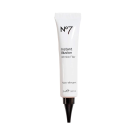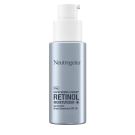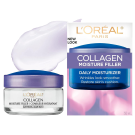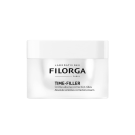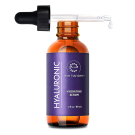
Top 10 Wrinkle Fillers in 2023
What Are Wrinkle Fillers?
Wrinkle fillers, also known as dermal fillers or injectable fillers, are substances that are used to reduce the appearance of wrinkles and fine lines on the face. They are a non-surgical cosmetic treatment option and are typically administered by a qualified medical professional, such as a dermatologist or plastic surgeon.
Wrinkle fillers work by adding volume to the skin, filling in wrinkles, lines, and creases. They can also be used to enhance facial contours and restore lost volume in areas such as the cheeks and lips. The effects of wrinkle fillers are temporary and typically last several months to a year, depending on the type of filler used and individual factors.
Some common ingredients found inside of wrinkle fillers include:
- Hyaluronic Acid (HA): This is a type of sugar (polysaccharide) that is present in body tissues, such as in skin and cartilage. It can bind up to 1,000 times its own weight in water, hence providing volume and plumpness. Fillers with this substance include Restylane, Juvederm, and Belotero.
- Calcium Hydroxylapatite: This is a mineral-like compound found naturally in human bones, suspended in a gel-like solution. It’s denser and provides more structure than hyaluronic acid, so it’s often used for deeper lines and wrinkles. Radiesse is an example of a filler using this substance.
- Poly-L-lactic Acid (PLLA): This synthetic, biodegradable substance has been used for many years in medical devices, such as dissolvable stitches. Sculptra is an example of a filler using PLLA. It helps stimulate your skin’s own collagen production to replace lost collagen.
- Polymethylmethacrylate (PMMA): This is a synthetic, biocompatible substance that has been used in medicine for much of the last century. Bellafill is an example of a filler using PMMA.
- Polyalkylimide: A transparent gel that is compatible with the body, polyalkylimide can be injected deeper than some other fillers, and is often used for deeper wrinkles and to enhance cheekbones and the jawline.
- Polycaprolactone (PCL): A biodegradable polyester used in a variety of medical applications, including sutures. Ellansé is an example of a filler that uses PCL.
It’s important to note that wrinkle fillers should be administered by a qualified professional who can assess your needs, discuss the potential risks and benefits, and recommend the most suitable type of filler for you.
What Are The Benefits of Wrinkle Fillers?
Wrinkle fillers offer several benefits for individuals seeking to reduce the appearance of wrinkles and achieve a more youthful appearance. Here are some of the key benefits of using wrinkle fillers:
- Reduction of Wrinkles and Fine Lines: The primary benefit of wrinkle fillers is their ability to effectively reduce the appearance of wrinkles and fine lines. By adding volume to the skin, fillers help smooth out wrinkles and creases, resulting in a more youthful and rejuvenated appearance.
- Restoring Facial Volume: As we age, we tend to lose volume in certain areas of the face, such as the cheeks and lips. Wrinkle fillers can be used to restore lost volume and enhance facial contours, creating a fuller and more balanced appearance.
- Non-Surgical Procedure: Unlike surgical treatments, such as facelifts or brow lifts, wrinkle fillers are a non-surgical option for facial rejuvenation. They are administered through injections, which means no incisions or general anesthesia are required. This leads to a shorter recovery time and minimal downtime for most individuals.
- Quick and Convenient: Wrinkle filler treatments are typically quick and convenient. Depending on the number of areas being treated, a session can usually be completed within a matter of minutes to an hour. This makes it a popular choice for individuals with busy lifestyles who want to achieve noticeable results without extensive time commitments.
- Natural-Looking Results: When administered by a skilled and experienced professional, wrinkle fillers can provide natural-looking results. The fillers are carefully injected into specific areas, allowing for precise sculpting and contouring. The goal is to enhance your natural features and restore a more youthful appearance without an exaggerated or “overdone” look.
- Temporary Effects: While the longevity of results varies depending on the type of filler used, most wrinkle fillers offer temporary effects. This can be an advantage for individuals who want to try out the treatment or make adjustments over time. If desired, the effects can be reversed or adjusted through additional treatments.
- Boost in Self-Confidence: Many people choose wrinkle fillers to enhance their self-confidence and feel more comfortable in their own skin. By reducing the appearance of wrinkles and restoring facial volume, fillers can help individuals feel more youthful, refreshed, and satisfied with their overall appearance.
It’s important to consult with a qualified medical professional to discuss your specific needs and expectations before deciding on any cosmetic procedure. They can provide personalized advice and guide you through the benefits and potential risks associated with wrinkle fillers.
How We Graded The Best Wrinkle Fillers
The grading and evaluation of wrinkle fillers involve considering several key factors to assess their effectiveness and suitability for different individuals. Here are some of the factors commonly considered when grading and evaluating wrinkle fillers:
- Safety Profile: The safety of a wrinkle filler is of paramount importance. It is essential to evaluate the filler’s safety record based on clinical trials, adverse event reports, and any potential risks or complications associated with its use.
- Efficacy: The effectiveness of a wrinkle filler is a crucial aspect of its evaluation. This involves assessing its ability to effectively reduce the appearance of wrinkles and fine lines, restore volume, and achieve the desired aesthetic outcome.
- Duration of Effects: The duration of the filler’s effects is an important consideration. Some fillers provide short-term results that last a few months, while others may offer longer-lasting effects for up to a year or more. The longevity of the results can influence the overall satisfaction of the patient and determine the need for repeat treatments.
- Natural-Looking Results: Achieving natural-looking results is a significant factor in evaluating a wrinkle filler. The filler should be capable of seamlessly blending with the surrounding tissues and not create an exaggerated or unnatural appearance.
- Reversibility: The ability to reverse or adjust the effects of a filler, if desired, can be an important aspect for some individuals. Fillers that are more easily reversible may be preferred by those who want flexibility in their aesthetic choices.
- Injection Technique: The ease of administration and the skill required for the injection technique can influence the grading of a wrinkle filler. Fillers that can be accurately and precisely injected with minimal discomfort may be considered more favorable.
- Patient Satisfaction: Assessing patient satisfaction and feedback is crucial in evaluating a wrinkle filler. Gathering data on patient experiences, preferences, and outcomes can provide valuable insights into the overall satisfaction and success rate of the filler.
- Cost: The cost of the filler can also be a consideration for both patients and healthcare providers. The pricing of the filler should be reasonable and reflective of its effectiveness, duration of effects, and other factors.
It’s important to note that the grading and evaluation of wrinkle fillers may also involve regulatory bodies, scientific studies, clinical guidelines, and expert opinions to ensure an evidence-based assessment. Different medical professionals and organizations may have their own criteria for evaluating and grading wrinkle fillers based on their specific expertise and requirements.
Our Top 10 Recommended Wrinkle Fillers
Backed by a 30-day money back guarantee!
Frequently Asked Questions About Wrinkle Fillers
Here are the top 10 frequently asked questions about wrinkle fillers along with their corresponding answers:
What are wrinkle fillers and how do they work?
Wrinkle fillers, also known as dermal fillers, are substances injected into the skin to reduce the appearance of wrinkles and fine lines. They work by adding volume to the treated area, plumping it up and smoothing out the wrinkles.
Are wrinkle fillers safe?
When administered by a qualified medical professional, wrinkle fillers are generally considered safe. However, like any medical procedure, there are potential risks and side effects. It’s important to discuss your medical history and any concerns with your healthcare provider before getting the treatment.
How long do wrinkle fillers last?
The duration of wrinkle fillers can vary depending on the type of filler used. Generally, temporary fillers last between 6 to 18 months, while some longer-lasting fillers can provide results for up to two years. It’s important to note that individual factors, such as metabolism and the treated area, can also affect the longevity of the results.
Are wrinkle fillers painful?
The level of discomfort during a wrinkle filler treatment can vary from person to person. Most fillers contain a local anesthetic, such as lidocaine, to help minimize pain. Additionally, healthcare providers may use topical numbing creams or ice packs to further alleviate any discomfort.
What are the common side effects of wrinkle fillers?
Common side effects of wrinkle fillers include temporary redness, swelling, bruising, itching, and tenderness at the injection site. These side effects are usually mild and subside within a few days. Serious complications are rare but can include infection, allergic reactions, or vascular issues.
Can wrinkle fillers be used on all skin types and ages?
Wrinkle fillers can be used on a variety of skin types and ages. However, the suitability of a specific filler depends on factors such as the patient’s skin condition, medical history, and aesthetic goals. A consultation with a qualified medical professional can help determine the best approach for an individual.
Are there any precautions or preparations needed before getting wrinkle fillers?
Prior to getting wrinkle fillers, it’s advisable to disclose any medications, allergies, or medical conditions to your healthcare provider. They may recommend avoiding blood-thinning medications or alcohol before the treatment to minimize the risk of bruising. It’s important to follow any specific instructions provided by your healthcare provider.
Can wrinkle fillers be combined with other cosmetic procedures?
Yes, wrinkle fillers can be combined with other cosmetic procedures, such as botulinum toxin injections (e.g., Botox) or laser treatments, to enhance the overall results. Your healthcare provider can assess your needs and discuss the potential benefits of combining treatments based on your individual goals.
How much do wrinkle fillers cost?
The cost of wrinkle fillers can vary depending on factors such as the type of filler used, the amount required, the location of the provider, and any additional fees. It’s best to consult with a healthcare provider or cosmetic specialist for a personalized cost estimate.
What is the difference between temporary and permanent wrinkle fillers?
Temporary wrinkle fillers, such as hyaluronic acid fillers, provide temporary results that can last several months to a year. Permanent or semi-permanent fillers, such as PMMA or Bellafill, offer longer-lasting effects, but they are considered more permanent and more challenging to reverse if desired. The choice between temporary and permanent fillers depends on individual preferences, goals, and the recommendation of the healthcare provider.
About The Author…

Dr. Katie Belesney
COSMETIC DERMATOLOGIST & BEAUTY ENTHUSIAST
Dr. Katie Belesney is a licensed Cosmetic Dermatologist, beauty enthusiast, and holistic health coach who has a passion for helping men and women look their best. She loves writing and educating everyday people through her blog Beauty List Review.
